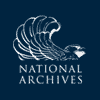Saturday 7th. Before break I visited the Orphan House at which there were one hund. & Seven boys & girls. This appears to be a charitable institution and under good management. I also viewed the City from the balcony of [ ] Church from whence the whole is seen in one view and to advantage. The Gardens & green trees which are interspersed adding much to the beauty of the prospect.
Charleston stands on a Pininsula between the Ashley & Cowper Rivers and contains about 1,600 dwelling houses and nearly 16,000 Souls of which about 8,000 are white. It lies low with unpaved Streets (except the footways) of Sand. There are a number of very good houses of Brick & wood, but most of the latter. The Inhabitants are wealthy—Gay—& hospitable; appear happy, & satisfied with the Genl. Governmt. A cut is much talked off between the Ashley & Santee Rivers but it would seem I think, as if the accomplishment of the measure was not very near. It would be a great thing for Charleston if it could be effected. The principal exports from this place is Rice, Indigo and Tobacco; of the last from 5 to 8,000 Hhds. have been exported, and of the first from 80 to 120,000 Barrels.
The Charleston Orphan House, established by city ordinance 18 Oct. 1790, was located in rented quarters on Ellery (now Market) Street until a permanent building for the institution was completed in Oct. 1794 (, 105–6; , 185). GW was greeted today at the orphan house by its six commissioners, who laid out their records for inspection. After receiving GW’s approbation of their management, the commissioners escorted him to the breakfast room where the children and attendants waited “in their proper places” to meet him. “On taking leave of the children,” said a newspaper account, “he very pathetically pronounced his benediction on them.” The visit ended with “a genteel breakfast . . . in the Commissioners’ room” (Md. Journal [Baltimore], 31 May 1791).
GW’s panoramic view of Charleston was from the second balcony of St. Michael’s steeple.
About 4:30 P.M. the merchants of Charleston gave an elaborate dinner for GW at the Exchange. “Upwards of 300” guests dined on “every delicacy that the country and season could afford” and sipped “wines excellent and in great variety.” In the harbor the ship America of Charleston fired a federal salute when GW arrived at the Exchange and a salute of 13 guns following each of the 17 afterdinner toasts. At 8:00 P.M. “fire-works [were] displayed on board the ship, which was illuminated with lanterns; amidst them the letter V.W. (Vivat Washington) were strikingly conspicuous” (Md. Journal [Baltimore], 31 May 1791). Today the Charleston City Council passed a resolution asking GW to sit at his convenience for a portrait by John Trumbull to hang in the city hall in commemoration of his visit (resolution in DLC:GW). GW consented, and a portrait was finished by May 1792 (Md. Journal [Baltimore], 31 May 1791; GW to William Moultrie, 5 May 1792, DNA: RG 59, Misc. Letters; , 170–71).

![University of Virginia Press [link will open in a new window] University of Virginia Press](/lib/media/rotunda-white-on-blue.png)
